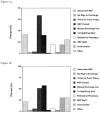Needle exchange and the HIV epidemic in Vancouver: lessons learned from 15 years of research
- PMID: 22579215
- PMCID: PMC3392518
- DOI: 10.1016/j.drugpo.2012.03.006
Needle exchange and the HIV epidemic in Vancouver: lessons learned from 15 years of research
Abstract
During the mid-1990s, Vancouver experienced a well characterized HIV outbreak among injection drug users (IDU) and many questioned how this could occur in the presence of a high volume needle exchange program (NEP). Specific concerns were fuelled by early research demonstrating that frequent needle exchange program attendees were more likely to be HIV positive than those who attended the NEP less frequently. Since then, some have misinterpreted this finding as evidence that NEPs are ineffective or potentially harmful. In light of continuing questions about the Vancouver HIV epidemic, we review 15 years of peer-reviewed research on Vancouver's NEP to describe what has been learned through this work. Our review demonstrates that: (1) NEP attendance is not causally associated with HIV infection, (2) frequent attendees of Vancouver's NEP have higher risk profiles which explain their increased risk of HIV seroconversion, and (3) a number of policy concerns, as well as the high prevalence of cocaine injecting contributed to the failure of the NEP to prevent the outbreak. Additionally, we highlight several improvements to Vancouver's NEP that contributed to declines in syringe sharing and HIV incidence. Vancouver's experience provides a number of important lessons regarding NEP. Keys to success include refocusing the NEP away from an emphasis on public order objectives by separating distribution and collection functions, removing syringe distribution limits and decentralizing and diversifying NEP services. Additionally, our review highlights the importance of context when implementing NEPs, as well as ongoing evaluation to identify factors that constrain or improve access to sterile syringes.
Copyright © 2012 Elsevier B.V. All rights reserved.
Figures






References
-
- Aitken C, Moore D, Higgs P, Kelsall J, Kerger M. The impact of a police crackdown on a street drug scene: evidence from the street. International Journal of Drug Policy. 2002;13:189–98.
-
- Archibald CP, Ofner M, Strathdee SA, Patrick DM, Sutherland D, Rekart ML, Schechter MR, O’Shaughnessy MV. Factors associated with frequent needle exchange program attendance in injection drug users in Vancouver, Canada. Journal of Acquired Immune Deficiency Syndromes & Human Retrovirology. 1998;17(2):160–166. - PubMed
-
- American Journal of Public Health. Discussion. 2000;90:1385–1396.
-
- Bastos FI, Strathdee SA. Evaluating effectiveness of syringe exchange programmes: current issues and future prospects. Social Science & Medicine. 2000;51:1771–1782. - PubMed
-
- Bardsley J, Turvey J, Blatherwick J. Vancouver’s needle exchange program. Canadian Journal of Public Health. 1990;81(1):39–45. - PubMed
Publication types
MeSH terms
Grants and funding
LinkOut - more resources
Full Text Sources
Medical

